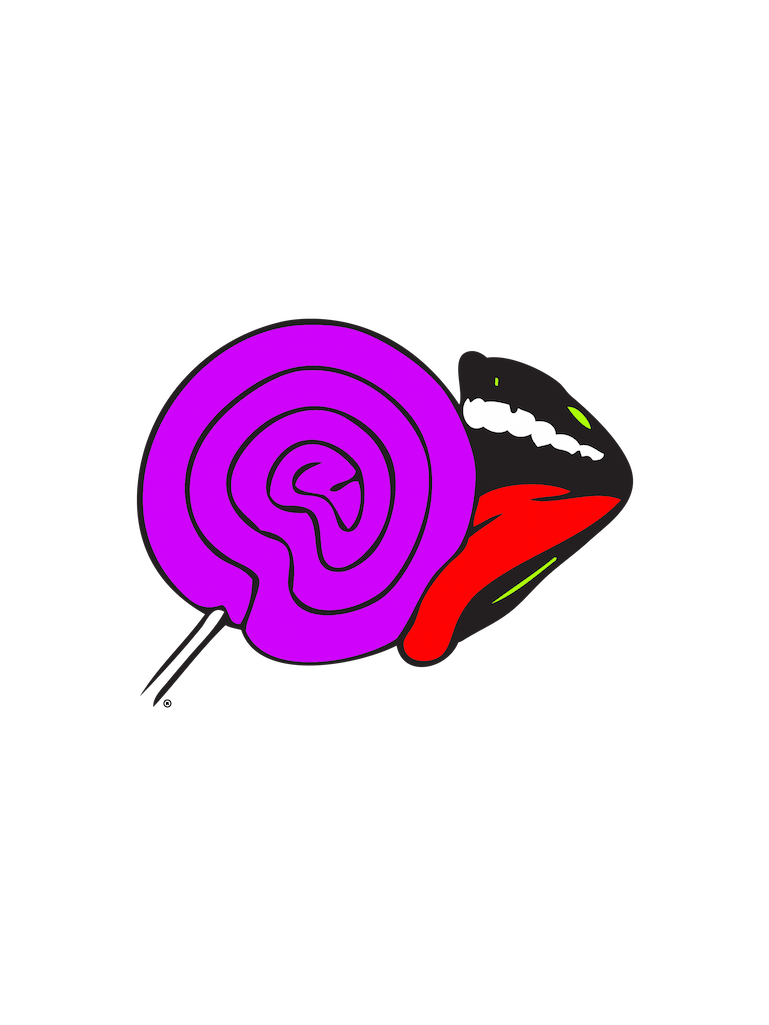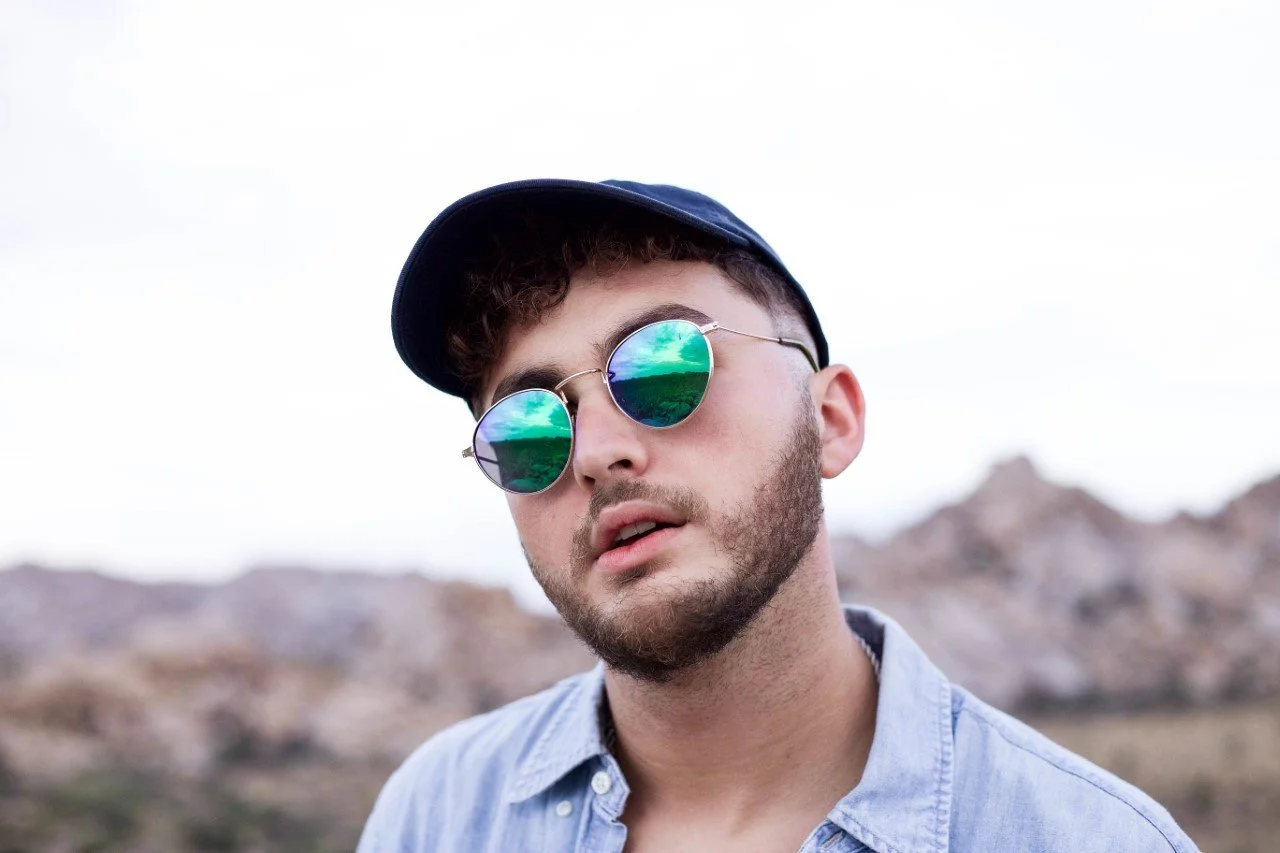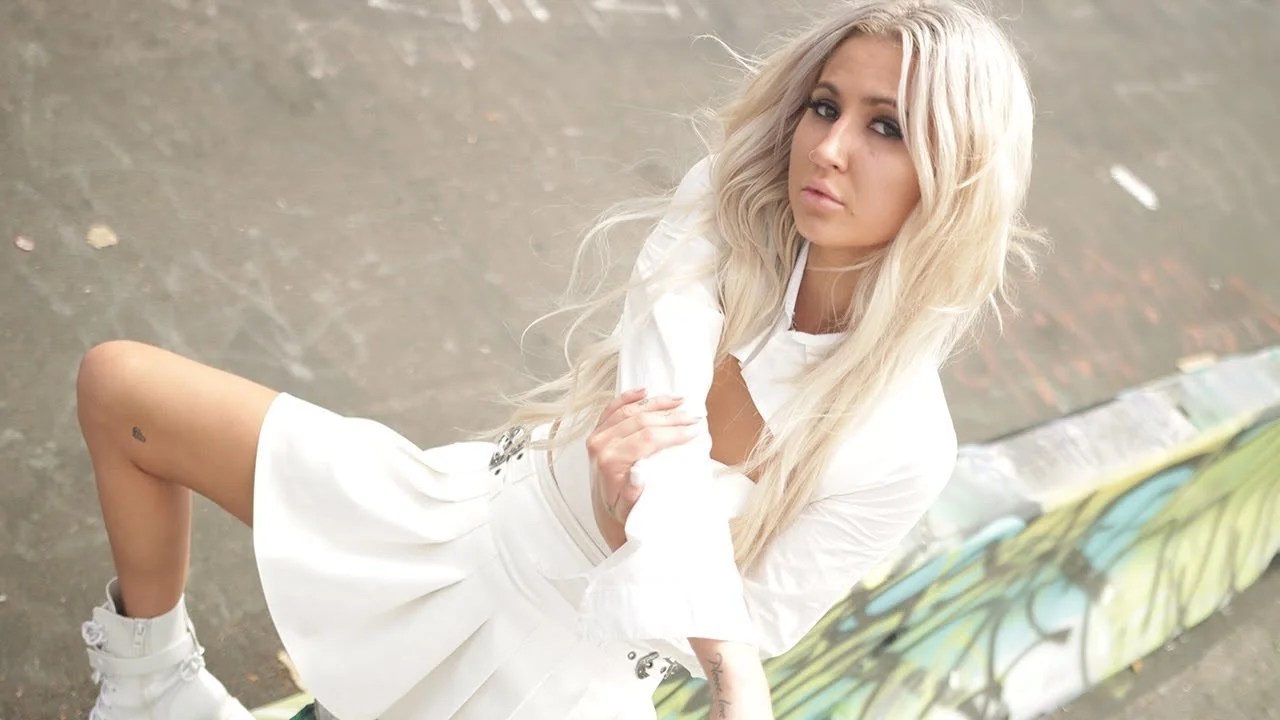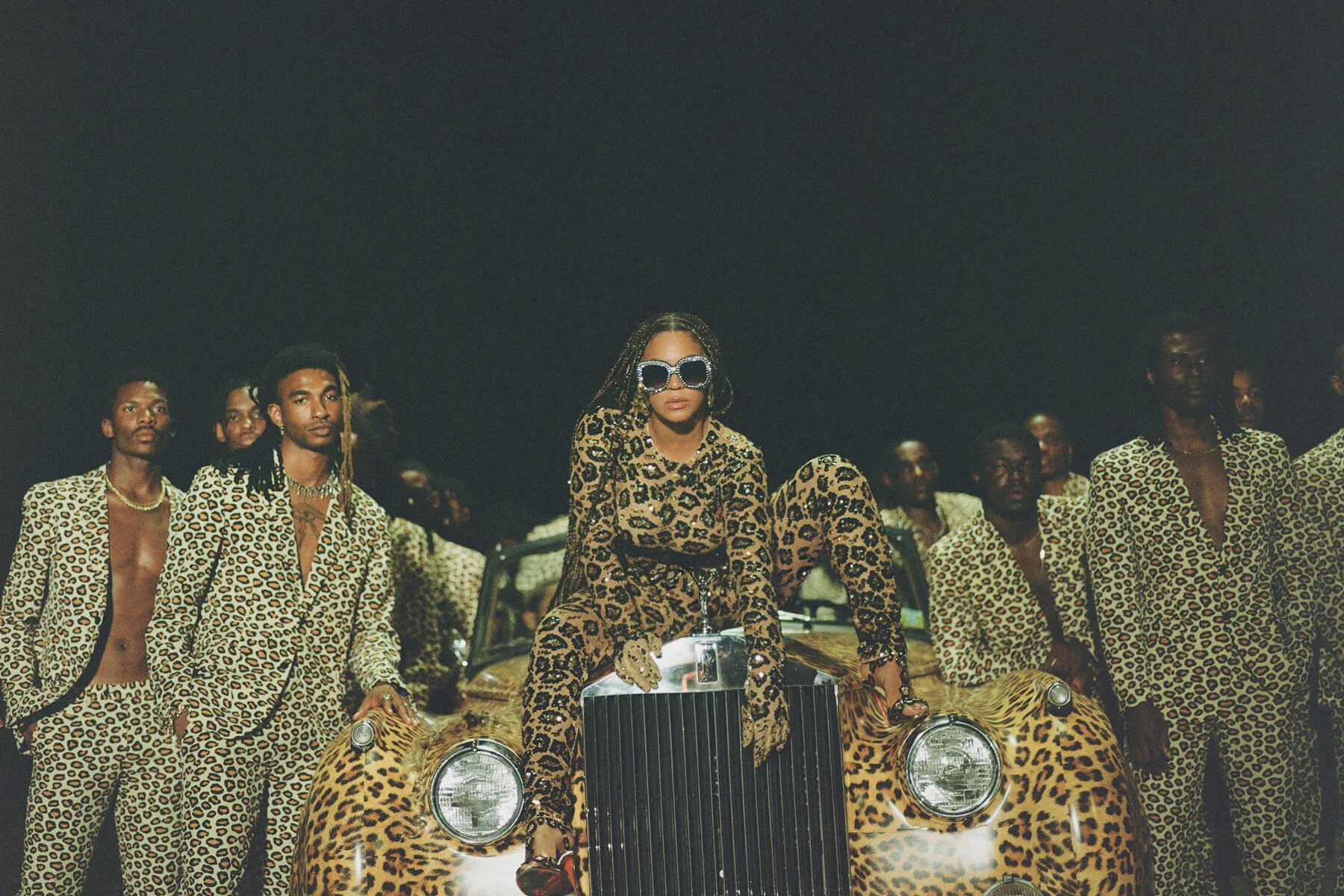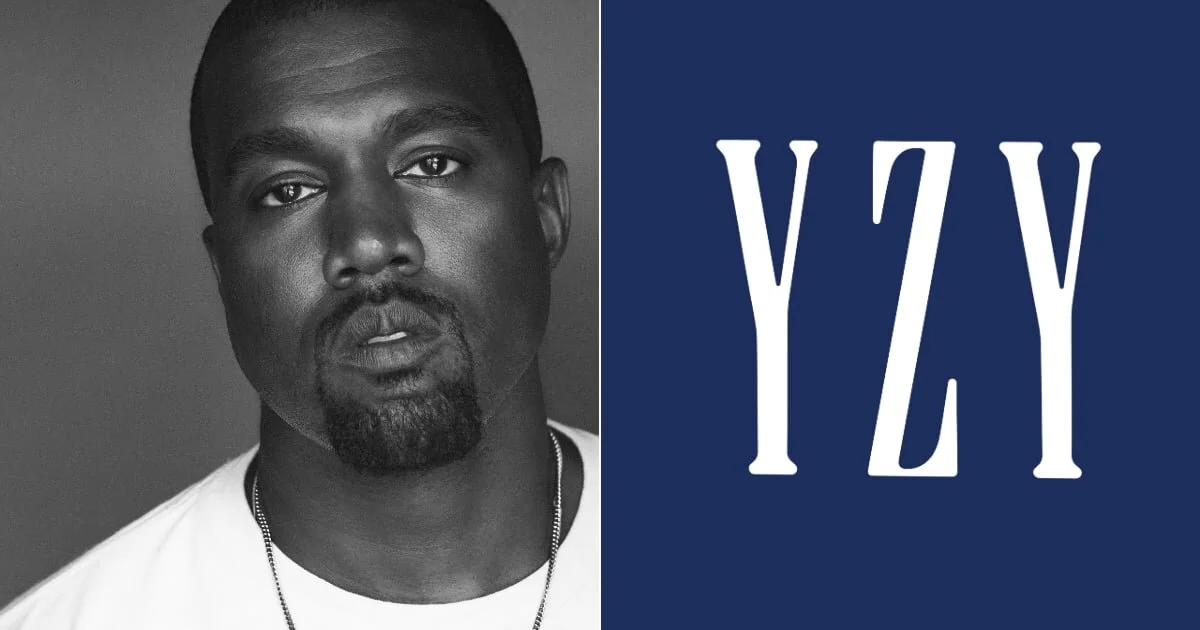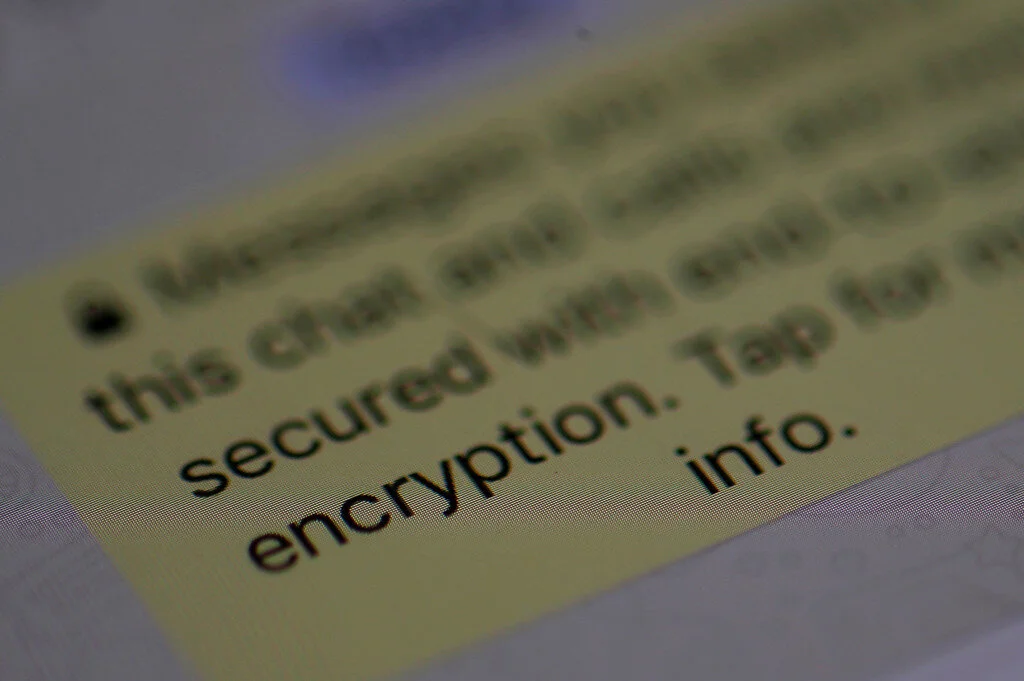Mid Year Recap: Your Phones, Computers, And Health Became The Most Important Assets
Many people may find it difficult to imagine, but we have made it halfway through 2020. This year, a lot of people realized how much their phones and computers mean to them. Since January, overall engagement on social media websites has spiked heavily. After being locked in for days, many like me relied on their media devices for basic human interaction.
Life as we know it has come to an abrasive halt since the pandemic has left countries struggling to respond to the rapidly spreading COVID-19. 2020 has been a wild ride so far. So, let’s round-up, and reflect on this halfway mark, to see the world has been up to.
December 2019
While the news was preoccupied with covering protests across the world, serious illness was slowly spreading across China. People in India were trying to fight a treacherous new bill that their government flung at them, and Iranians were still in dispute with their neighbors.
In America, New Year’s had people excited for the roaring 20s again. The 20s in the last decade was an era of prosperity for America. While WWI had left Europe on the decline, America was making its way to the top of the world.
We all know how the decade ended, but the beginning reflected hope. That is what most people were looking forward to. The economy was on an uprise (American), societal unrest was balanced, and optimism was high.
Little did people know, that the situation would change so drastically. The night drowned out, and the 20s came in roaring. But this was a different kind of roar, an unrelenting lion’s roar. So far, 2020 is proving to be our long-overdue wake-up call.
January 2020
Record-breaking temperatures and months of severe drought had Australia suffering from a series of wildfires. The fires started in late July and peaked during the first week of January. Reports suggest that over 27.2 million acres of bush, forest, and parks across Australia have burned.
As Australia was cooling down, tensions between the US and Iran gained some traction. The first wind of 2020 for the US was, unfortunately, a wind of war.
An American drone strike, near Baghdad International Airport, killed Maj. Gen. Qassem Soleimani of the Iranian IRGC. This intervention bolstered up the preexisting civil unrest in the region and the Iranian people were now angry.
Although the US military tried hard to justify their precautionary measures, the Iranian reaction was inevitable. Iranian ballistic missiles hit two American military bases in Iraq. No casualties were reported from the incident, but over 100 troops were later diagnosed with severe brain injuries.
Two of the ballistics launched that day, ended up shooting down a Ukrainian flight, killing all 176 passengers on board. The Iranian government claimed full responsibility for this wrongdoing.
Despite numerous cases being reported as early as November 2019, China waited until January 2020 to officially notify the World Health Organization of the novel coronavirus. The virus is suspected to have originated in a live animal market in the city of Wuhan, in the Hubei province of China.
Not long after that, on January 11th, China reported its first coronavirus death.
During the same time in England, we saw Prince Harry and Meghan Markle announce their retreat from their duties as senior royals of the Buckingham Palace. The two claimed they were ready to be financially independent and to spend much of their time in North America.
On January 12th, the eruption of the Taal Volcano began. The eruption went on for days, turning the sacred land of Luzon into a bleak- moonlike surface, cover with a blanket of ash. The eruptions ended up killing various animals and affecting many families across Luzon Island.
After being impeached under two articles of impeachment (abuse of power and obstruction of Congress), President Donald Trump’s impeachment trial in the senate began on January 16th. On the 20th of January, the US saw it’s first coronavirus case.
A 30 something man was diagnosed with the virus, after his return to Seattle from China. By this time, the virus had made its way to several countries across the world Japan, Taiwan South Korea, Iran, etc.
On January 26th, a helicopter crash in California broke millions of hearts across the world. This accident claimed nine human lives, among them, was “Black Mamba” Kobe Bryant, and his gleeful 13-year-old daughter Gianna. The helicopter was in flight during exceptionally foggy weather.
The group was en route to Bryant’s Mamba Academy when the Helicopter lost control and went tumbling down. The end of January saw the United Kingdom finally making its departure from the European Union. The country wasn’t sure how to react, so the UK saw waves of celebrations and protests across the country.
February 2020
The month came in soft, compared to the previous one. China was trying hard to contain the spread of coronavirus, while the US was to prepare for the Election year.
February began with a big win for Kansas City when the KC Chiefs took home the Super Bowl Trophy after a 50 year-long dry spell. The team beat the SF 49ers, to become the champions.
On February 4, the Iowa Democratic caucus was delayed because of technical difficulties. The delay caused chaos and an impressive deal of confusion.
It was later cleared up that the application used for polling added to the preexisting technological issues. The next day marked a historical landmark when President Donald Trump became the third president to be impeached and subsequently acquitted by the Senate.
They acquitted him on both articles. For abuse of power, Trump was acquitted 52-48; and for obstruction of Congress, he was acquitted 53-47.
The Oscars took place on the 9th of February. This year, Parasite became the first foreign film to win the Academy Award for Best Picture.
It was a monumental day for filmmakers across the world. For years, the Oscars were called out for their bias towards American films. That all changed this year when a Korean film finally encouraged the Academy to look outside the box.
On February 11th, the World Health Organization finally named the disease caused by the novel Coronavirus. Formerly known as 2019-nCoV, the disease was officially named COVID-19. The widespread effect started to become more evident, but most countries took a slower approach in combating the spread of the virus.
February also saw the death of the Chinese doctor who exposed the condition of the Coronavirus in Wuhan. WHO sent teams to China, to aid the recovery, and to research the origin of the virus. Countries across the world praised WHO for its initiative and its rapid response to the surfacing of an unknown virus.
On February 18, the Boy Scouts of America filed for Title 11 bankruptcy. The foundation faces many liabilities, with hundreds of sexual assault cases pilling up on their shelves daily.
Later that month, degraded Hollywood producer Harvey Weinstein was alas convicted of third-degree rape and first-degree criminal sexual act. He was also acquitted on the charge of predatory sexual assault. The decision was out on February 24th, 2020.
Though some see this as a victory, many believe that there is still a long way to go. There are others like this man, that still escape the law, unscathed.
March 2020
March 2020 was when most of the world came to a halt. Countries across the globe were actively trying to find ways to combat the spread of Coronavirus.
The month of March began with tensions rising between Turkey and Syria. Turkey retaliates with major offensive action against the Syrian government after 36 Turkish soldiers were killed in a Syrian air and artillery strike 3 days earlier. Turkey went offensive on March 1st.
The same day, in the US, Pete Buttigieg dropped out of the Democratic presidential race. Later that same day, the first COVID- 19 case was identified in New York a health care worker returning from Iran.
The next day, Amy Klobuchar dropped out of the presidential race and moved on to endorse Joe Biden.
COVID- 19 was slowly spreading its grasp across the world. On the 4th of March, Japan announced its plans to quarantine visitors from China and South Korea, because of coronavirus. The visit of the Chinese president was also canceled, but Japan was confident that the Olympics would still take place.
Following Japanese footsteps, and in attempts of curbing the spread of the virus, Australia banned visitors from South Korea until further notice. The following day, on March 5, Italy announced the closure of all schools across the country, to lower the risk of COVID- 19 among students.
Major sporting events were canceled and others declared that there will be no fans. By the 6th of March, the total number of worldwide coronavirus cases had crossed 100,000.
The situation in the US was a little different from Europe and Asia. While the number of cases in Italy, China, and Iran was climbing rapidly, the numbers in the US were on a gentler rise. On the 5th of March, the CDC declared 129 COVID-19 cases across the US.
The next day, California declared a state of emergency after a 71-year-old man dies from the coronavirus. The day after that (March 6), President Trump signed an $8.3 billion dollar aid bill to combat the rapid spread of the virus across the country.
Senator Elizabeth Warren of Massachusetts- a popular candidate in the 2020 democratic primary ended her campaign on March 5 after a slow run in the initial primaries. Past this point, COVID- 19 news mostly dominated the vast majority of the world media. The rest of the world issues seem to continue on, in hindsight.
On March 9, Ireland passed a major order to cancel all Saint Patrick’s Day parades to prevent the virus from spreading further. The same day, Italy became the first country to implement a nationwide lockdown, due to the spike in COVID-19 cases with 10,040 cases and 630 deaths. The country closed all its borders and shut down all shops except grocery stores and pharmacies, to stem the grip of this disease.
On the 11th of March, the World Health Organization officially declared the coronavirus outbreak a global pandemic. When this was announced, the worldwide infected toll had climbed up to 121,564 people, with over 4,373 people killed. Later that day, we also received news confirming that Coachella would be postponed for the time being in a bid to slow the spread of the virus.
Following this move, various universities across the world switched to online classes, until the foreseeable future. After the universities, nationwide K-12 schools announced the cancellation of classes, until further notice.
The interminable day ended with Harvey Weinstein receiving a 23-year prison sentence for a criminal sexual act and rape. The following day, the US closed its borders to 26 European countries, to avoid possible incoming infections.
On March 13, the President of the United States declared a national emergency amid the coronavirus pandemic. After weeks of undermining the seriousness of the virus, the government passed this decision, engaging the Stafford Act that allows states to access $50 billion in federal aid.
The president tried to instill hope, when he said, “This will pass through and we’ll emerge even stronger for it. We’ve learned a lot.” Spain declared a complete lockdown on March 15, after the first lady tested positive for coronavirus.
The next day was a dark one for the American stock market. US stocks saw a significant plunge on March 16, when the Dow fell a sharp 2,997 points- largest dip since 1987. This was a major strike on the American economy, triggering a major tumble in the nation’s employment rate. Carmen Reinicke of Business Insider said:
“The Dow Jones Industrial Average slipped 9.7%, or 2,250 points, within the first minute.”
On March 23, the Senate passed a $1.8 trillion stimulus package, with a notion to offer economic relief during the coronavirus. The money would be distributed among small businesses, major corporations, and reportedly $1,200 to most adults. On the 29th of the month, the President officially signed the package.
On March 24, the Summer Olympics 2020- which were supposed to take place in Tokyo was postponed until 2021. The International Olympic Committee announced the new date: July 23, 2021. On the same day, millions of people in India were placed under lockdown until the COVID- 19 situation is in order.
March was the month when the majority of the people realized that this situation was here to stay. Disneyland, movie theatres, the NBA, March Madness, the NHL, EPL, La Liga, and many other major attractions across the world declared closure for the foreseeable future.
With this, major cities passed a stay-at-home order, forcing people to stay indoors. This sparked a realization that 2020 would be an unforgiving year.
But the month ended with the launch of a new YouTube News series called “Some Good News.” SGN was a youtube based news show started by actor John Krasinski, with the sole motive of spreading “some good news.” The show saw success for a month, but it came to a halt in May when NBC took over the show.
April 2020
April 2020 was the first month of absolute downfall for the American economy and its workforce. This month, the US moved into the second phase of the pandemic where the spread of the virus was slowly getting out of hand. The month of April opened with the pandemic passing a grim milestone.
On the 2nd of April, the number of total coronavirus cases worldwide surpassed one million. Three struggling months after they identified the first case in China, the global death toll had crossed 51,000, and over 208,000 people had recovered. During the same time, reports suggested that Brazilian president Jair Bolsonaro was downplaying the situation claiming “it’s not all its being made out to be”
The following day, after receiving many complaints, federal officials advised airlines to process refunds for passengers whose flights were canceled. Later that day, President Trump invoked the Defense Production Act, triggering the stoppage of the export of needed masks and medical devices.
On April 4th, the President fired Michael Atkinson, a senior official and the apparent whistleblower who kicked off Trump’s impeachment process. After undermining the severity of the situation for weeks, on March 5, British Prime Minister Boris Johnson was diagnosed with coronavirus.
He began his treatment at a hospital in London. The next day, Japanese Prime Minister Shinzo Abe announced a state of emergency and released a stimulus package of $1 trillion to combat the economic impact of the coronavirus. This move helped Abe regain his credibility after his people blamed him for inaction during the early stages of the pandemic.
On April 7, New York declared that they saw over 800 coronavirus-related deaths in one day. The same day, city officials of Wuhan, China, lifted the citywide lockdown after 73 days. The place where the first coronavirus case was reported now allowed traffic in and out of the city. This was permitted as the city reported no new deaths for the first time since the virus took a toll.
The day after, Bernie Sanders dropped out of the Democratic race for the US Presidency. This resulted in former Vice President Joe Biden becoming the conjectural Democratic nominee to stand against President Donald Trump.
Through the course of the Democratic primaries, Sanders maintained his strong lead and earned a suitable amount of victories in the race. Ultimately he dropped out after a lengthy series of losses and with his former competitors endorsing Joe Biden.
April 9 marked the 100th day of the year, and also the day when New York declared 160,000 people infected. This meant the state alone had more COVID- 19 cases than any country in the world. The number of deaths had also surpassed 7000.
This was an ominous day for the US and many were grieving indoors while our essential workers struggled at the frontline. New York Gov. Andrew Cuomo addressed the people saying:
“9/11 was supposed to be the darkest day in New York for a generation… And then, in many ways, we lose so many more New Yorkers to this silent killer.”
On the 11th of April, Brazil recorded 1,000 COVID related deaths and more than 20,000 active cases. This information surfaced after President Bolsonaro ignored his government’s advice, and challenged the pre-established restrictions.
He attempted to justify his moves by shedding light on his attempts to protect the economy. This disregard would result in the outbreak soon reaching its peak in Brazil.
This was also the month for emerging “Mask trends.” In April, masks had become the new normal. Most people on the streets would usually be wearing masks.
Fashion designers across the world decided, “this would be a brilliant time to take on a challenge.” Daily, Instagram would flaunt various mask designs from across the world. Vogue had a list, updated on a weekly basis, that would showcase the most fashionable face mask, and links to buy them.
Soon, following the designers, the rest of the crowd joined in the bandwagon and started making their own masks. DIY was the recent trend. With long empty hours on hand, people needed fresh things to keep busy, on a daily basis. This encouraged the public to consider various “Do It Yourself” (DIY) activities. April was the time to be productive if you couldn’t go out.
On April 14, Barack Obama released his decision to endorse his former Vice President Joe Biden, in the race for the US Presidency. Around the same time, in India, Prime Minister Narendra Modi declared the extension of India’s COVID- 19 lockdown until the 3rd of May. This decision was greatly appreciated across the world and faced no opposition within the country as well.
Though the initial response of the WHO was highly praised by numerous analysts, governments across the world, later brushed aside, ignored, and criticized the recommendations made by the organization. By April, many countries had arguments against WHO, and their handling of the situation when the news of the virus had initially surfaced.
On April 14, US President Donald Trump froze further funding for the World Health Organization, pending a review for their weak initial response to the global pandemic, and for allegations of being “China-centric.”
This was also the month America declared heavy unemployment. With shelter orders spreading across the country, resumption of the economic activity was greatly curtailed because of the government’s effort to contain the coronavirus pandemic.
As a result of this, the employment rate fell by 1.4 million and 20.7 million, respectively, in March and April 2020. The employment rate saw a constant downfall until May.
On April 15, South Korea became the first country to hold a general election amid this global pandemic. South Koreans headed to polling booths in large numbers, to bring victory to President Moon Jae-in’s ruling Democratic party.
On the 19th of April, thousands of protesters took to the streets in Israel, to oppose Prime Minister Netanyahu and corruption kindling within their bureaucratic government. The protesters respected the social distancing laws and stood 2meters away from one another during the march.
The same day, it was confirmed that a little over 1300 prisoners in Ohio tested positive for coronavirus. Since then, multitudes of prisons across the country began mass testing to avoid any further spread.
April 23rd was an unexpected day for the American media. US President Donald Trump suggested UV light treatment to fight Coronavirus, during a White House press briefing. At the same meeting, he also hinted towards injecting disinfectants as a treatment for COVID-19.
Government officials and disinfectant brands were quick to comment on the President’s statements, saying “its (injecting disinfectants) not only extremely dangerous but potentially deadly.”
The month of April was a rough one, not only for the American people but also for its economy. 43 states had closed schools, over 30 states had closed leisure spots, and outdoor activity was minimal, even in major cities. The fear of the virus had spread across the country, but it would soon diminish.
May 2020
By May, major states across the US had a standing stay-at-home order, and it had been in effect for weeks. Spending weekdays at home was the new normal. With over 23 million unemployed, businesses were suffering to a great extent. Numerous businesses throughout the country had closed down, and the ones that didn’t- were operating remotely.
Daily client meetings and team briefings would take place over Zoom. The online traffic was tremendous, and our dependence on digital devices had skyrocketed. The majority of the universities across the world were using Zoom to conduct lessons.
Watching your co-workers/classmates at their most comfortable was the most amount of social interaction one could receive. It was highly unexpected, but Zoom had become a major part of the pop culture.
Zoom, along with Houseparty, became the go-to apps for online video conferencing.
During this time, the concentration of Tik-Tok and Instagram challenges had multiplied rapidly. One would see a new social media challenge surfacing daily.
Many people would yield to their boredom and eventually give in to the challenge. I performed multiple Tik-Tok challenges, just to keep myself entertained. Some of the famous challenges were #FliptheSwitch, #DontRushChallenge, #PillowChallenge.
The month of May opened with Canadian PM Justin Trudeau announcing a ban on 1,500 types of assault-style weapons, in response to the brutal Nova Scotia shooting that left 22 people dead in April.
On the same day, May 1, Elon Musk tweeted about Tesla’s shares being priced very high. This lead to a negative reaction in the market and the brand’s value fell by $14 billion.
This day also saw the beginning of an armed protest in Michigan. After governor Gretchen Whitmer reinstated the state of emergency, several protestors gathered at the State Capitol in Lansing, Michigan, showing their opposition to the stay-at-home-orders.
On May the 4th, various world leaders across the world, together pledged $8 billion to research treatments and a vaccine for COVID-19. The US and Russia famously did not contribute to this pool.
India extended its pre-existing lockdown, while slowly loosening restrictions, in regions with fewer coronavirus cases.
On May 5, additional information revealed that a patient admitted to a Paris hospital in December had COVID-19, indicating that the virus had been in France longer than previously thought. The next day, May 6, the UK became the first country in Europe to report over 30,000 confirmed COVID cases.
On May 7, the US unemployment claims rose up to 33.3 million, or 20% of the total workforce. This was a fifty-year low and 16.5% dip in under 2 months. While the total unemployment was falling, employment in the travel, leisure, hospitality construction, and food sectors was on the rise again.
On May 12, a day after President Vladimir Putin eased the country’s lockdown, the number of confirmed cases in Russia climbed up to 232,000, making it the second-highest in the world- right behind the US. The same day, the PM of India, Narendra Modi, announced its first economic rescue package of $260 million, mainly used for the reestablishment of various small businesses across the country.
On the 13th of May, after months of isolation and distress, many Hong Kong citizens returned to the streets to resume protests against the autonomous power of China. The protestors gathered, without waiting for the government to lift restrictions.
This resulted in over 230 arrests of people breaking social distancing and assembly laws. The number of protesters is only expected to increase over the summer.
A few days after that, on May 17, former US president Barack Obama criticized the US government’s efforts to handle the pandemic, during his online address to graduates around the world. He claimed that officials, “aren’t even pretending to be in charge.”
Mid- May, for a lot of students, was graduation week. Due to the pandemic, graduations around the world were canceled, but that didn’t stop people from celebrating online. Various celebrities took to social media, in order to address and inspire the graduating class of 2020. John Krasinski organized an online graduation ceremony on his SGN platform, featuring speakers like Oprah Winfrey, Jon Stewart, and Steven Spielberg.
On May 20, a deadly cyclone left the eastern shore of India, and a majority of Bangladesh, completely devastated. Cyclone Amphan hit West Bengal, surrounding Indian states, and southern Bangladesh, with winds of 185 km per hour- claiming over 84 lives. The cyclone cost India over $200 million in economic value, leaving thousands of people homeless in the midst of a pandemic.
On May 22, with a total of 330,890 cases, Brazil became the country with the second-largest population of COVID infected. This happened soon after the Brazilian president Bolsonaro called the coronavirus, “a little flu.”
May 25 brings us to the story of the year. Video footage of a Minneapolis police officer kneeling on the neck of a 46-year-old African- American man, went viral soon after the man died in Police custody.
The video was almost 10 minutes long, showing the officer kneeling on George Floyd’s neck for over 5 minutes, till he was unconscious, and then 3 minutes after that for the entirety of which, Floyd was unresponsive. The officer ended up killing Floyd, and this sparked a jolt of revolt across the nation.
This mishap once again brought to the fore concerns over the law enforcement’s bias against the African American minority, and the constant reoccurrence of unnecessary Police brutality.
Protests soon spread across the country, with incoming support from various other parts of the world. What began as peaceful protests soon turned violent.
Some protesters resolved to the destruction of property and looting to express their anger. In many other places, the gatherings turned violent and ended up injuring multitudes of people. In some cases, people even lost their lives fighting for justice.
Though some demonstrations have turned violent, many demonstrators have been called traitors, people resorting to criminal activities have held the cause back it hasn’t stopped true believers from gathering and showing their support for the cause. “I can’t breathe”, the final words of George Floyd, have become a rallying cry among protesters across the globe.
The protests started on May 25, and they still haven’t stopped. In the earlier stages, the cause saw a great deal of resistance from the government. They sent police in riot gear to mind peaceful protestors.
This just aggravated the demonstrators and the movement grew stronger. The governments across the country had to resort to curfews in order to maintain some socio-economic stability.
This worked largely in favor of the movement. The curfews helped to draw out the violent protestors, and this ensured that the procedures would stay peaceful from then on.
On May 29th, 2020, Derek Chauvin, the officer who killed George Floyd was arrested and charged with third-degree murder and second-degree manslaughter.
June 2020
It was all about the movement in June. The killing of George Floyd was a tipping point- the most recent occurrence of racially driven malfeasance. This triggered a long-overdue outlash, fueled by built-up resentment and years of oppression.
On June 1st, the independent autopsy, led by a former New York City medical examiner, revealed that Floyd’s death was a homicide caused by asphyxia. The day after that, the other three officers involved in the incident were charged with aiding and assisting with second-degree murder and manslaughter. Chauvin, the prime culprit, also received harsher charges, with second-degree murder and manslaughter.
The same day, US President Donald Trump threatened to deploy the military to quell protests across the country. Later that day, he had the authorities- violently dispersed peaceful protesters, so he could walk with his staff to St. John’s Church. This didn’t damage the movement at all.
The month of June has seen the #BlackLivesMatter movement grow stronger than ever. What started as a protest for justice is now a global movement demanding equality. The public desires “fairness”, and the end of unnecessary abuse of authority- this time, they are ready to take what’s not given to them.
On June 10, the focus of the Black Lives Matter movement were statues of Confederate figures and explorers. Many of these statues were removed, including the ones of Confederate President Jefferson Davis and of Christopher Columbus in Richmond.
So far dozens of lives have been lost due to the protests- on both sides. But this doesn’t weaken the public, as the cause they stand for radiates positive energy. On June 12, the protestors occupied a recently abandoned precinct, as well as the surrounding area. The region has been called the Capitol Hill Autonomous Zone, and the city officials have permitted the protestors to occupy this region- denying entry of federal troops.
The protests are growing stronger than ever, with the motives of the protestors remaining unmoved. As the demonstrations move ahead in the timeline, their demands grow more relevant and prominent.
Initially, the public asked for prosecution and justice for victims of police brutality, like George Floyd and Breonna Taylor. But now, they demand that government #DefundThePolice. In other terms, the protestors ask for better and more feasible redistribution of the country’s valued resources.
The protestors continue to show their strength, while the rest of the world still tries had to fight the pandemic. The emergence of the protests definitely slowed down the reopening of the economy, but now many cities across the country are opening up.
The quarantine aspect of 2020 has started to drown out, but it’s not going to disappear so soon. As bars, restaurants, and stores open up in the US, many places in the world still remain in a harsh lockdown. India extended its nationwide lockdown, until further notice- while they are making plans to slowly open sectors to resume economic activity.
As I mentioned earlier, the year 2020 has been wild. Almost everyone in the world has never been through anything like this before. A global lockdown sent the world through a soul cleanse, where most of the people had no option, but to confront their loneliness. In doing so, they discovered things that they otherwise, could never have.
The process for everyone was different, but the eventual destination remains similar for all. Some people spent hours in Virtual Reality, trying to- for just a second- escape the truth of the world.
Others threw themselves into chores- over obsessive cleanliness. I was among those who cleaned up under stress. A few weeks into the quarantine, I was out of things to clean, so I made a mess, just so I could clean it.
Most people threw themselves into social media following up of lost friends, participating in challenges, and being over-informed regarding world affairs. With hours on hand, it seems like everyone in the world is well informed about the situations developing around them.
People find ways to occupy themselves, just so they don’t have to confront themselves, but now it’s slowly approaching its end. It’s not too long before we get out on the other side, having learned an impressive deal about ourselves and the world. As the world prepares to reopen, a new ray of hope spreads across the globe.
